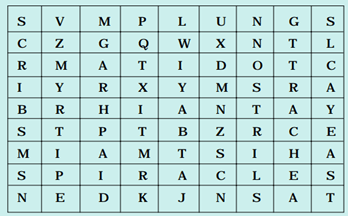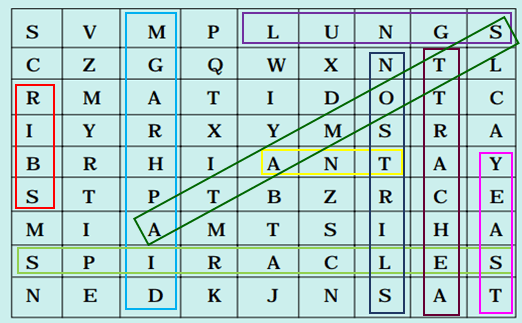NCERT Solutions Class 7 Science Chapter 6 Respiration in Organisms is provided here to help students in understanding the topic thoroughly. All these solutions are solved by experts with a detailed explanation. Class 7 NCERT Solutions for Science Chapter 6 includes all the textbook exercise questions and answers. These solutions will help students complete their assignments & homework.
Class 7 Science Respiration in Organisms Questions and Answers
Exercise Questions
Question 1: Why does an athlete breathe faster and deeper than usual after finishing the race?
Answer: An athlete needs to supply extra energy to his muscle cells which have worked hard during running. For this, he breathes faster and deeper so that more oxygen is supplied to the cells. This speeds up the breakdown of food and as a result, more energy is released.
Question 2: List the similarities and differences between aerobic and anaerobic respiration.
Answer: Similarities: Food is oxidized in both cases and energy is released.
Differences between aerobic and anaerobic respiration:
| Aerobic respiration | Anaerobic respiration |
| It is the process of breakdown of food in the presence of oxygen. | It is the process of breakdown of food in the absence of oxygen. |
| Its end products are CO2 and H2O. | End products of anaerobic respiration can be lactic acid or CO2 and alcohol. |
| It takes longer time to release energy. | It is a fast process as compared to aerobic respiration. |
| It produces large amount of energy. | It produces small amount of energy as compared to aerobic respiration. |
| Examples: It occurs in most plants and animals. | Examples: Yeast, bacteria, human muscle cells, etc. respire anaerobically. |
Question 3: Why do we often sneeze when we inhale a lot of dust-laden air?
Answer: When dust particles enter our nostril, it triggers a message to the brain. The brain instructs the nasal chamber to initiate sneezing. This is a method to remove the unwanted dust particles from the nostrils. Sneezing is a type of defence mechanism used by our body.
Question 4: Take three test-tubes. Fill each of each with water. Label them A, B and C. Keep a snail in test-tube A, a water plant in test-tube B and in C, keep snail and plant both. Which test- tube would have the highest concentration of CO2?
Answer: Test tube A will have the highest concentration of CO2 because test-tube A will have Snail which expels out CO2 into the tube. In tube C, there is a plant which will inhale CO2 to decrease CO2 concentration in the tube C.
Question 5: Tick the correct answer:
(a) In cockroaches, air enters the body through
(i) lungs
(ii) gills
(iii) spiracles
(iv) skin
Answer: (iii) spiracles
(b) During heavy exercise, we get cramps in the legs due to the accumulation of
(i) carbon dioxide
(ii) lactic acid
(iii) alcohol
(iv) water
Answer: (ii) lactic acid
(c) Normal range of breathing rate per minute in an average adult person at rest is:
(i) 9 – 12
(ii) 15 – 18
(iii) 21 – 24
(iv) 30 – 33
Answer: (ii) 15 – 18
(d) During exhalation, the ribs
(i) move outwards
(ii) move downwards
(iii) move upwards
(iv) do not move at all
Answer: (ii) move downwards
Question 6: Match the items in Column I with those in Column II:
| Column I | Column II |
| (a) Yeast | (i) Earthworm |
| (b) Diaphragm | (ii) Gills |
| (c) Skin | (iii) Alcohol |
| (d) Leaves | (iv) Chest cavity |
| (e) Fish | (v) Stomata |
| (f) Frog | (vi) Lungs and skin |
| (vii) Trachae |
Answer:
| Column I | Column II |
| (a) Yeast | (iii) Alcohol |
| (b) Diaphragm | (iv) Chest cavity |
| (c) Skin | (i) Earthworm |
| (d) Leaves | (v) Stomata |
| (e) Fish | (ii) Gills |
| (f) Frog | (vi) Lungs and skin |
Question 7: Mark ‘T’ if the statement is true and ‘F’ if it is false:
(i) During heavy exercise the breathing rate of a person slows down. (T/ F)
(ii) Plants carry out photosynthesis only during the day and respiration only at night. (T/ F)
(iii) Frogs breathe through their skins as well as their lungs. (T/ F)
(iv) The fishes have lungs for respiration. (T/ F)
(v) The size of the chest cavity increases during inhalation. (T/ F)
Answer:
(i) False
(ii) False
(iii) True
(iv) False
(v) True
Question 8: Given below is a square of letters in which are hidden different words related to respiration in organisms. These words may be present in any direction – upwards, downwards, or along the diagonals. Find the words for your respiratory system. Clues about those words are given below the square.
(i) The air tubes of insects
(ii) Skeletal structures surrounding chest cavity
(iii) Muscular floor of chest cavity
(iv) Tiny pores on the surface of leaf
(v) Small openings on the sides of the body of an insect
(vi) The respiratory organs of human beings
(vii) The openings through which we inhale
(viii) An anaerobic organism
(ix) An organism with tracheal system

Answer:
(i) The air tubes of insects → Trachea
(ii) Skeletal structures surrounding chest cavity → Ribs
(iii) Muscular floor of chest cavity → Diaphragm
(iv) Tiny pores on the surface of leaf → Stomata
(v) Small openings on the sides of the body of an insect → Spiracles
(vi) The respiratory organs of human beings → Lungs
(vii) The openings through which we inhale → Nostrils
(viii) An anaerobic organism → Yeast
(ix) An organism with tracheal system → Ant

Question 9: The mountaineers carry oxygen with them because:
(a) At an altitude of more than 5 km there is no air.
(b) The amount of air available to a person is less than that available on the ground.
(c) The temperature of air is higher than that on the ground.
(d) The pressure of air is higher than that on the ground.
Answer: (b) The amount of air available to a person is less than that available on the ground
Having a good grasp over CBSE NCERT Solutions for Class 7 Science will further help the students in their preparation for board exams and other competitive exams. NCERT Solutions for Class 7 Science Chapter 6 Respiration in Organisms provided by CBSE Path help students to clear their doubts and to obtain good marks in the exams. All the solutions provided in this article are strictly based on the CBSE syllabus and curriculum.